The idea to conquer the Britain’s highest peak came a long time ago, but we did not get a chance to fulfil the dream – our travelling around the country was so busy that we could hardly find a full day for climbing. One fine day the stars are aligned. It was our third trip to Scotland when we decided to climb the mountain no matter what it takes.
We chose the day for climbing and began to get ready for the ascent. Some clothes and equipment have been already bought for our previous journeys to Scotland, Iceland, and Ireland. Purchasing clothes and equipment is quite costly, and we prefer to buy everything we need in a specialised store step by step during a year. We carefully chose all things and items we may need for climbing: trekking poles which help ascending and descending, thermal underwear, gloves, hiking boots, thermal socks, and hats. Basically, all these things seemed to be enough for quite an easy, as we thought, trekking route to the mountain. So, we’ve got everything we need and chose the day for climbing… What could go wrong? “Nothing!” we thought and started our trip without hesitation.
A few words should be said about the mountain itself. Ben Nevis is commonly translated from Scottish as “a malicious mountain”. Although it is 1,344 m high, the trail to the summit is very long – the ascent and descent is 20 km long and takes 8-9 hours. The mountain is inhospitable and unfriendly because it is covered with heavy fog 355 days a year, and only a few tourists are lucky enough to see the sun shining there and admire the beautiful scenery around. The amount of precipitation is 7 times higher than in Edinburgh and London. Firstly conquered as early as in 1771, the mountain attracts thousands of tourists who come every year from all over the world and dream of conquering its summit. Do not underestimate its small height because the climatic conditions are far from perfect. Very strong storms are usually reported 261 times a year and cause several deaths every year. Taking all things together, I think there are two words that best describe Ben Nevis – harsh and treacherous.
Let’s get down to our unforgettable experience with unfriendly Ben Nevis. The first failure was the place we have chosen for our night stay the day before climbing. While studying a map, we were not very attentive and booked an accommodation 60 km away from the point where the ascent should be started. In other words, we lost an hour in the morning just to get the starting point. The starting point of the trail to Ben Nevis is in Fort William. There was a visitors’ centre where you can buy everything you need for a hike, study a large topographical map of the area, ask staff members about weather forecasts, drink a cup of hot tea and just set your mind on your long way to the top of the mountain. The first thing I noticed was all tourists coming to the info desk and enquiring about the weather. So did we. The staff member looked at me in surprise and explained that today’s weather did not allow us to go to the summit: heavy rainfalls and wind gusts up to 60 miles per hour were expected on the top. I surprised in turn. The weather seemed to be quite good at the foot of the mountain – although the sun was not shining, we saw no hint of what he was describing. I converted the expected 60 miles per hour into kilometres and got wind gusts of 90 km per hour. The figure made me think that the staff member might have been mistaken, since such strong gusts of wind could hardly occur on a relatively low altitude – 1,344 m. We shrugged shoulders, made a selfie “before the road”, and set out on our way to the mountain.
The trail seemed to be very easy at the start, and I thought to myself that we could finish climbing much quicker than 8-9 hours described in many guidebooks. We were moving on a fairly simple trail, which runs along the mountain, and were stopping from time to time to shoot the amazingly beautiful scenery.
It began to drizzle about 50 minutes after the start. Drizzling rain stopped from time to time giving a hope for a better weather. When we crossed a wooden bridge, designated as midway in all guidebooks, I did cheer up because we could make half the way just in less than two hours. My joy however passed quickly once we have come out on a bare area and left trees behind. The rain intensified immediately. Now it was clear: the weather was not going to change for the better. Nevertheless, we kept chin up – we heard much about Ben’s harsh disposition and were well-prepared: we treated all our clothes with a special water-repellent spray. The trail with numerous boulders became much harder and we had to step high to get large stones.
By the way, there were quite many people on the trail besides us. This fact definitely instilled a hope and encouraged us – we saw many people who were not afraid of weather forecasts. A man in bright-coloured sport shoes and with no hat on his gleaming bald head drew my attention. I was very surprised by his appearance. It seemed that he was going for a run around the stadium rather than for climbing to the top of the mountain.
The path to the summit of Ben Nevis lies through a nearby mountain, and it is the isthmus between the two mountains that can be called as midway. There was a mountain lake on the left which looks pretty picturesque in sunny weather. However we saw it through the thick veil of heavy rain.
Ben Nevis stood right in front of us, and its menacing look made it clear: Ben Nevis was not happy with our idea to climb on its top. The trail to the top was a long narrow serpentine, which literally cuts up the mountain from one edge to another. We looked up and realised that it was really a long way ahead, but we were in no hurry, so we were moving to our goal slowly and stubbornly. We walked just 200 m when I saw the man in bright-coloured sport shoes which draw my attention some time ago. I could not believe my eyes: has he reached the top so quickly? My smartphone app showed that it was at least 5 km to the top or nearly 2 hours. I decided not to guess, stopped the hurrying man and asked him how he could finish the ascent so quickly. The man hurried and quickly replied that he has not reached the top and turned back, because a heavy storm was coming and it would be much better to get out of there. While saying that, he pointed his hand somewhere towards the top and ran down without waiting until I saw what he was talking about. He looked as if he was running away from something terrible and frightening, as if he knew something more than we did. This idea made us nervous a little, but we were not going to step back. That man was not properly equipped, as we were. “He had no trekking shoes”, – I thought and kept moving to the top. At the same time, I noticed fog creeping out from behind the mountain. It was so thick that it seemed to me I could touch it or make a snowball… Later we realised that it was just the beginning…
In a moment, the entire mountain was in fog, the rain intensified, and jets of water were flowing down from my face and filling in all holes in my clothes. But the worst thing – as I then thought could ever happen to me – were my shoes which were all soaked. Water poured out of them with every step, and rainfall poured back a new portion of H2O. Heavy rain was accompanied by terrible wind gusts. The wind was so strong that I even fell on my knees a few times and could not get up. During such wind gusts, we had to stop and wait a few minutes to catch our breath. There was no place to sit or hide among boulders. It was there when I realised that my strength began to give out. It happened when two thirds of the trail was passed. I felt I was exhausted trying to cope with the wind, when rain jets were beating my cheeks like dozens of thin needles and all my clothes were soaked to the skin. But the way to the top was long. By that point, I have recalled visitors centre staff’s warnings many times and my mockery of wind gusts expected to be 60 miles per hour. Here comes Climbing and Trekking Rule No. 1: Never underestimate weather forecasts before climbing. Further 3 kilometres were incredibly hard: every 20 minutes I had to fight with my wish to turn around and go down – it seemed to me that I was totally exhausted, had no strength to proceed and could not find strength to keep going. In such situation it was very important to find your internal resources and motivation not to give up. While moving to the top, we saw a group of three tourists. The appearance of one of the girls made me shudder. Her wool coat was soaked to the skin. Water streams flowed down the coat and add extra weight to her wet coat. Moreover, she had no hat, her head was completely wet, and she was apparently chilled to the marrow of her bones. I realised that I was doing not so bad. Here is Rule No. 2: Choose appropriate clothes for mountain hiking. There are so many stories about people who were not well-prepared for mountain hiking and got hypothermia or even frostbites.
So, sometime after that, we got the very top of the mountain with stone pyramids standing 50 meters apart from each other. This was a sign that we were almost there. Visibility was as low as 1.5 meters, so we moved from one pyramid to another almost by touch. Moreover, the wind at the top appeared to reach its maximum speed making every next step harder and harder. Our hands became numb with cold despite the gloves.
Finally, after 4 hours of climbing, we reached the top. Contrary to expectations, I felt no moral satisfaction at all, because I was very exhausted and frozen, and all I wanted was to quickly go down and get warm. At the same time, I knew perfectly well that the descent ahead would very difficult and it would hardly be easier than climbing. We made a selfie on the top and started our descent slowly. I can say from my own experience that descending is much harder than ascending. In our case, we had to carefully choose stones to step down, because their wet surface became extremely slippery and we could easily stumble and fall. By the time of our descent, our clothes, including underwear, were completely wet. The only thing that remained dry was our clothes under a windbreaker jacket, the one we bought just before the journey to Scotland. As promised by a store assistant, the jacket successfully withstood the five-hour heavy rain test.
On our way down, we met two teenagers who were climbing to the top. When they saw us, they cheered up, stopped us and asked how long it would take to get a pub. When I heard the word “pub”, I thought that harsh wind might have impaired my hearing and asked them to repeat their question. When they said the word “pub” again, I became seriously worried about my hearing – it might have been severely impaired by heavy rain and there might be first signs of bilateral hearing loss. That’s all because there was no pub within a 15-km radius of the mountain. Who would ever build a pub in such remote place? To get there visitors should crawl on their knees in storms and heavy rains. I asked them to repeat their question one more time and even took off my hood to free an ear and hear them better. To my surprise the word I’ve heard for the third time was “pub” again. I am afraid I looked like an insane person, because I laughed too loudly and I was not quite myself. The guys overcame 12 kilometres looking for a pub on the mountain where the wind speed was as high as 90 km per hour, where they were likely to stumble and fall and where there was no sign of any civilization. I failed to persuade them and they kept moving to the top of the mountain after all my assurances that there was nothing like a pub on the top. I thought that they would be very disappointed to find nothing but stone pyramids there. Our trip seemed to be more meaningful in this respect – we were soaked to the skin and chilled to bones, but at least we have achieved our goal.
The turning point of the entire expedition occurred half the way back. When I was going down from a stone, I badly put my foot and the entire body weight somehow fell on the toe of my right foot. I felt terrible pain and shouted. At that moment I felt all the bitterness and despair of our situation. I recalled all those who told us that it was better not to go in such weather, the man in bright-coloured sport shoes who turned back to avoid such a torment. Moreover, I was very sorry for myself, I understood that something bad happened to my toe and we had to go down at least 2 hours, but I could hardly make a step. All my emotions found their way out into weeping. I was sitting on a stone under the pouring rain and gale-force wind. I was crying and was unable to hear what was going on around. Being deep in my emotions, I did not hear that someone was talking to me. I was sure that it was Kirill who was trying to talk to me and paid no attention at him. But what was my surprise when I heard the English speech. I rubbed my eyes and stopped weeping for a moment just to see who was distracting me from my grief. I saw a man sitting next to me on a stone and talking to me. He told me that not to cry, he would stay with us to help me to go down and that we would soon be at the foot of the mountain. I was so surprised that tears stopped themselves immediately. I even felt embarrassed to cry in the presence of a stranger, I pulled myself together and calm down.
It was a 45-year-old man. His name was Robert and he came there from Wales on a bicycle! He is an artist and has a gallery in his hometown. He came to Scotland for his vacation and decided to climb on Ben Nevis. But when he saw what was happening with the weather, he changed his mind and turned back. And it was there where we met.
Then we went down all three. Robert took our trekking poles. He gave me his hand and every now and then when I had to step down from very large stones. The rest of the way I was leaning on Kirill’s arm, because I was unable to go down alone. The rain and wind did not abate. Every step down with the injured toe caused pain to the entire foot, but I tried not to break down. While descending, Robert told us about his work, his life and asked us about Ukraine, the country unknown to him before. Almost at the foot of the mountain, he mentioned a pub located at the beginning of the trail. I asked once again just to be sure I understood him correctly. He was talking about the pub standing on the left, before the trail. It was that pub young guys were looking for. I thought that those guys might have been very surprised to know how close they were to the pub compared to the distance they had to overcome looking for it. We decided that we should definitely go there to drink whiskey and celebrate the end of such a hard day. By the time we came down, we did not care of ankle-deep puddles under our feet. We were lucky because the temperature was not very cold, about 9 degrees. Be it 5 degrees or less, we would literally freeze on the go.
When we finally got to the pub and took off our clothes, we saw large puddles of water around us which add job to local staff. Robert was living in the camping nearby and went there to dry himself and his clothes. He said goodbye and ordered strong drinks for us as a sign of our acquaintance. Unfortunately, I was so exhausted by this march that I forgot to take a picture with him. But meeting Robert did help me to overcome the remaining distance with my injured toe.
We started climbing at 9 am and were sitting in the pub by 5 pm. Eight hours under heavy rain did their job. Firstly, our passports, which were in my shoulder bag, were completely soaked. One visa was literally washed away. Fortunately, it was a single-entry Irish visa which we have already used. But the valid UK visa was also damaged. Here comes Rule No. 3: Keep all your valuables and documents in waterproof zip bags. Secondly, we soaked to the skin and caught a cold. We could neither change our clothes immediately after the descent not take a hot bath, because we had to go to another town, 100 km far from Fort William, where we booked our accommodation.
My toe remained swollen for three days and caused incredible pain. Every step was painful. Putting on shoes turned into a torture. Three days later, the swelling was gone but the area under and around the nail blackened demonstrating a severe bruise.
I checked weather forecasts for Ben Nevis that night. The Internet reported snowing and temperature decrease to -1. If we started climbing the subsequent day, we would unlikely have reached the top.
Today, as then on the top of the mountain, I do not feel utter joy with the fact that we were on the top. Anyway I am grateful that the mountain gave us these lessons and a chance to look differently at the process of ascending where you should be very attentive to any detail, even a minor one.

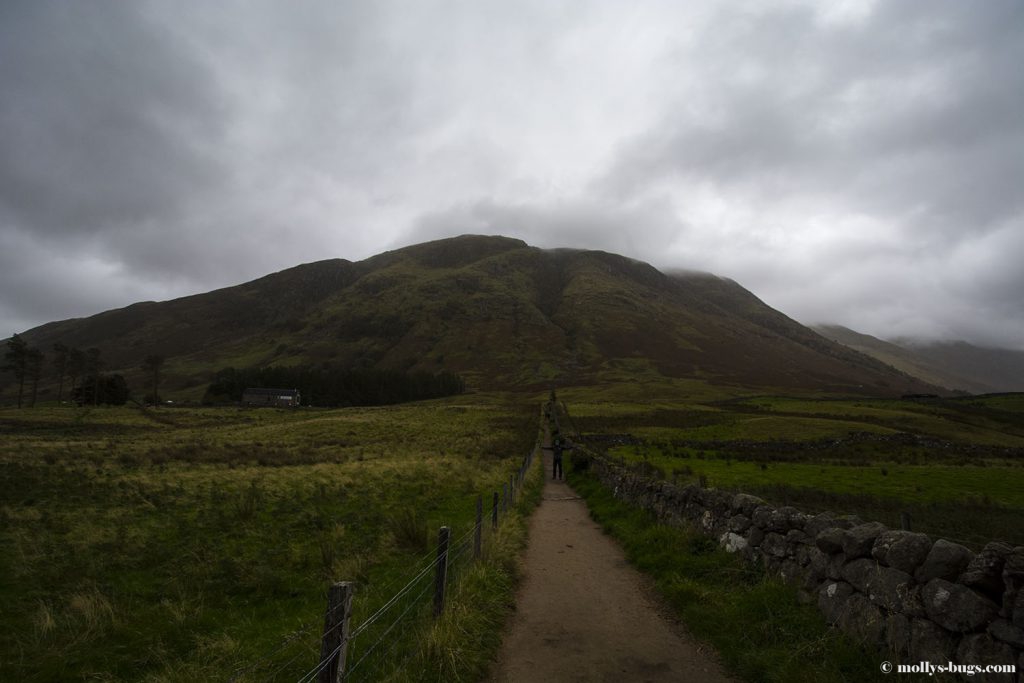
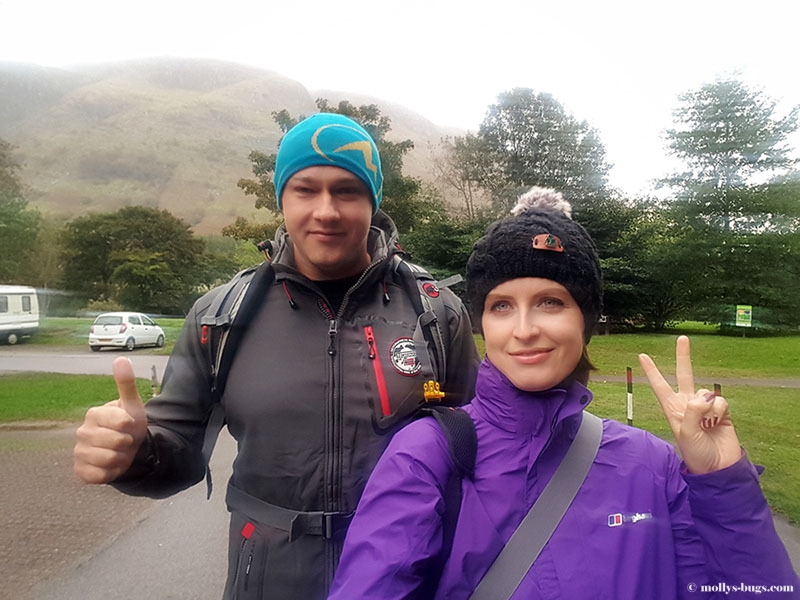
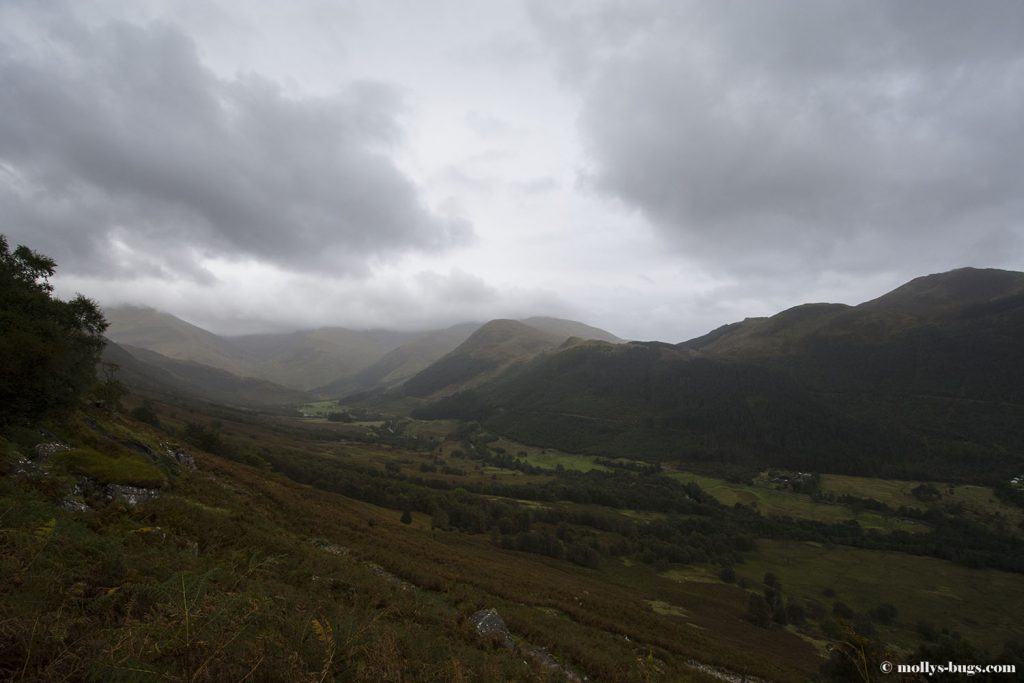
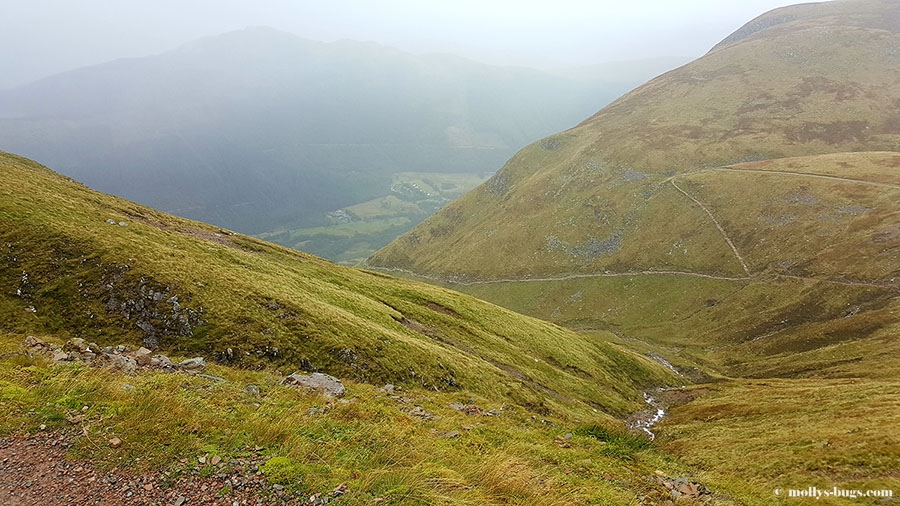
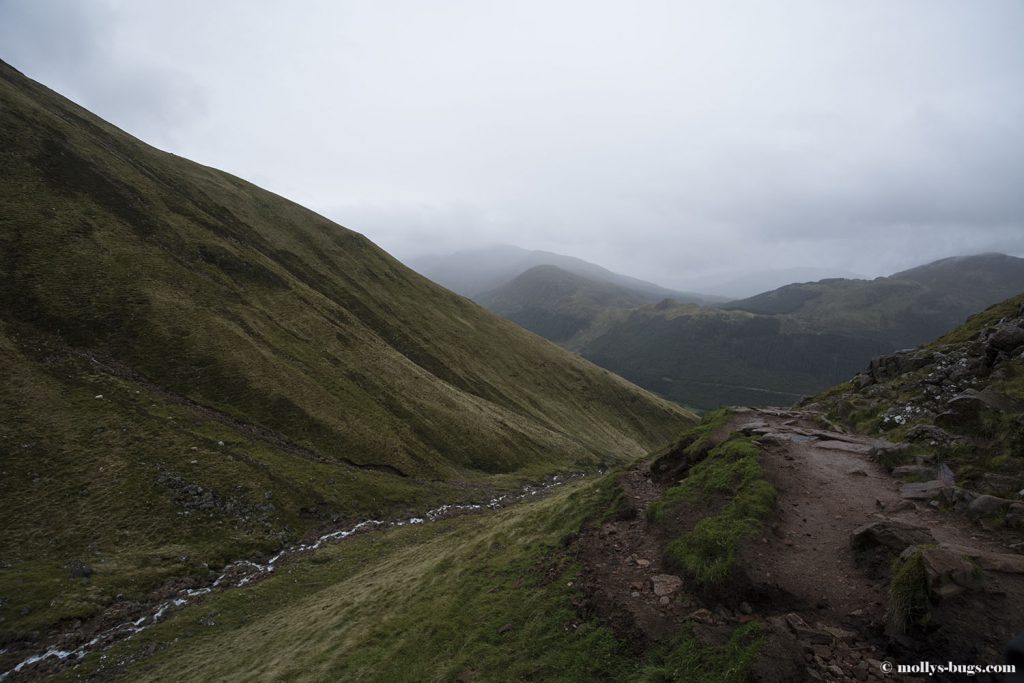
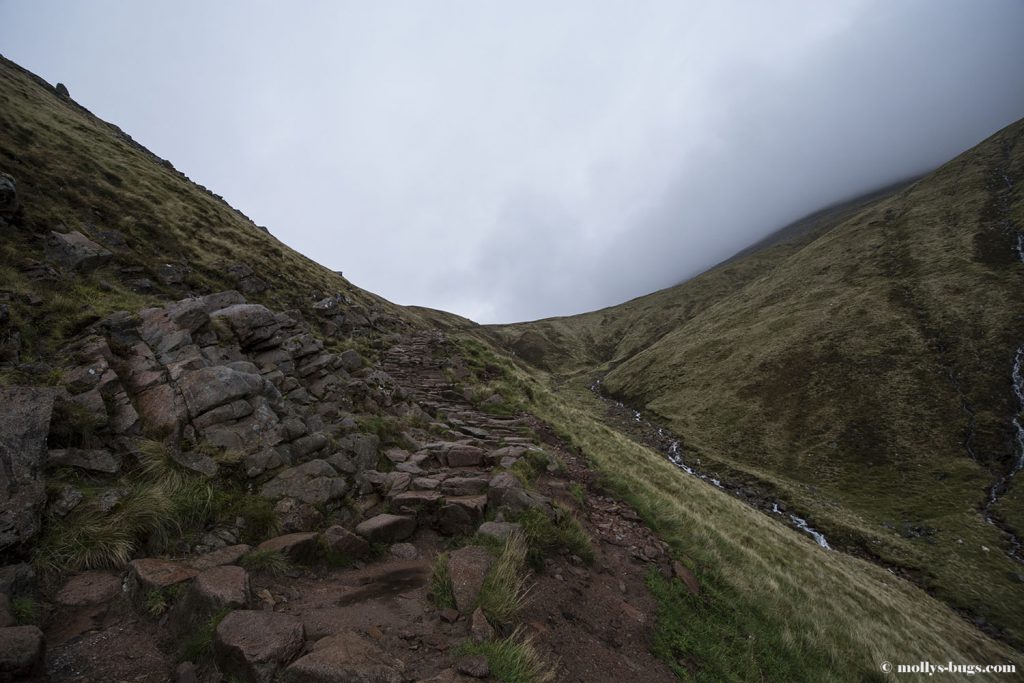
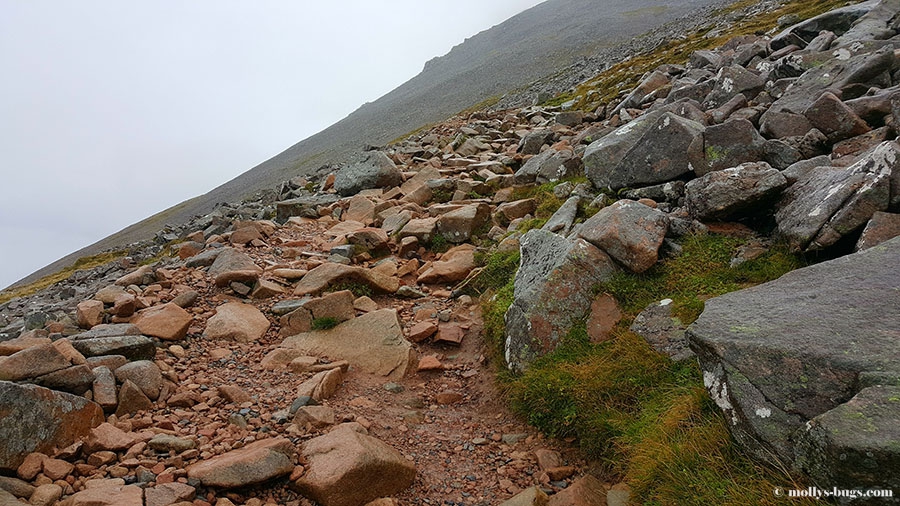
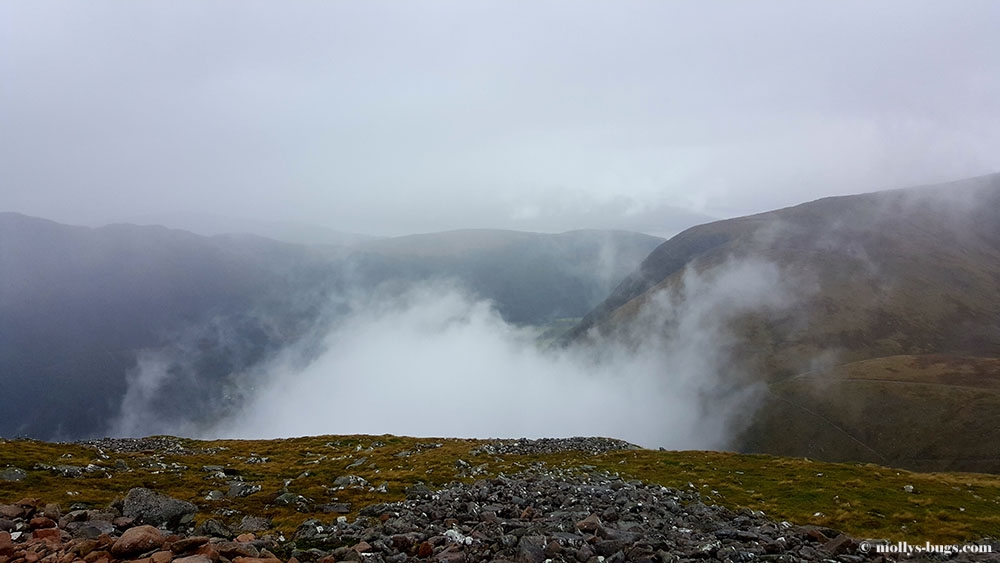
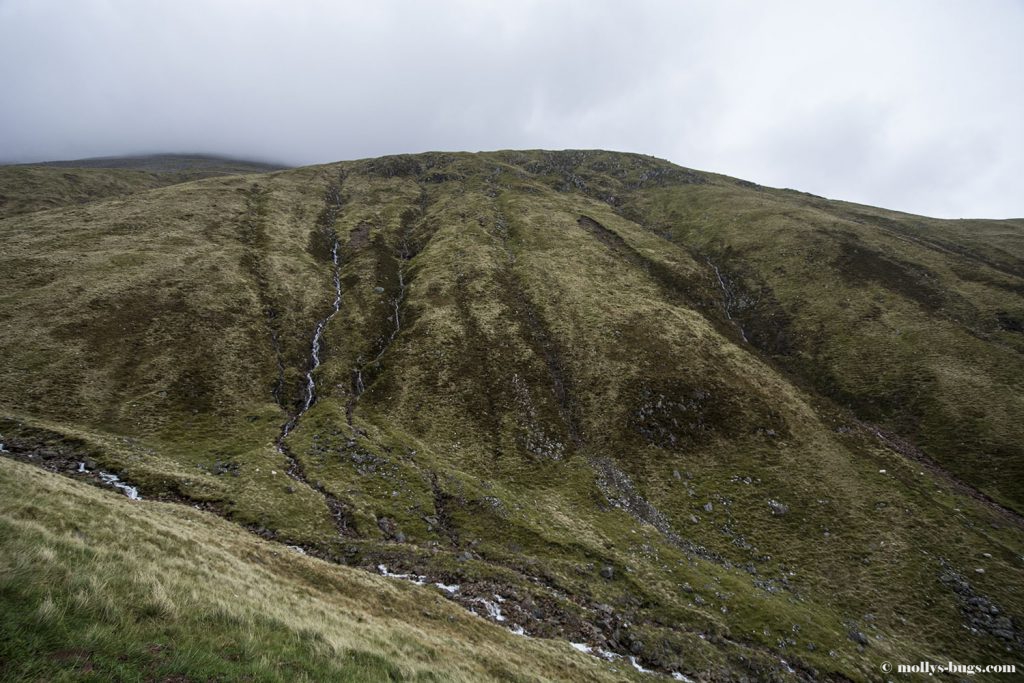
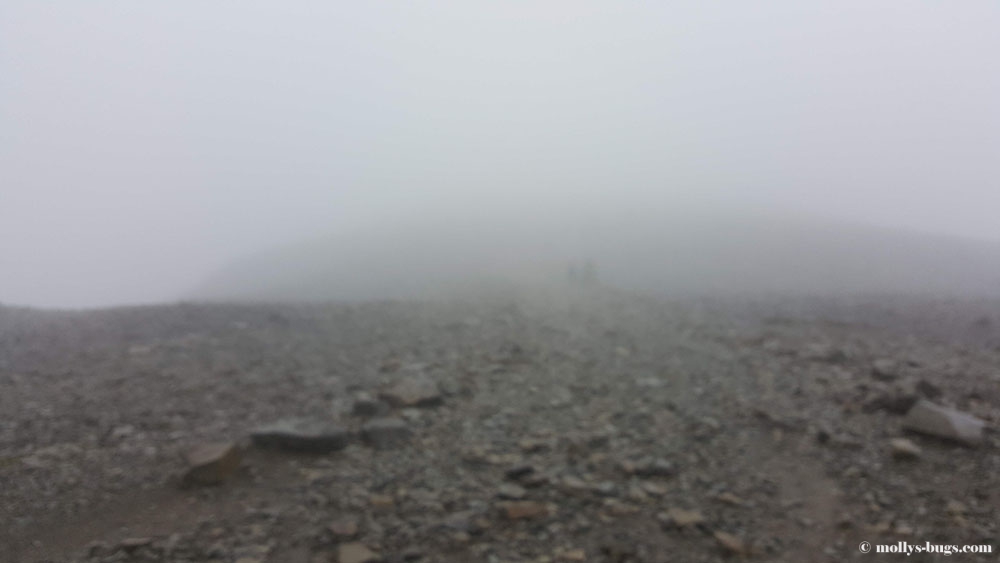
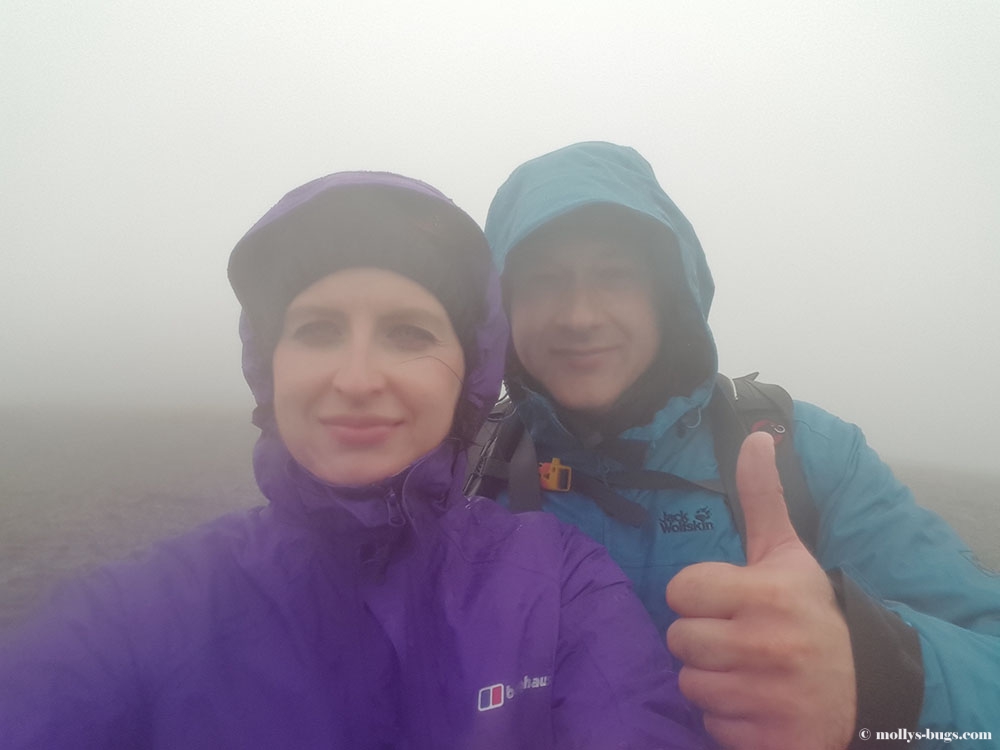
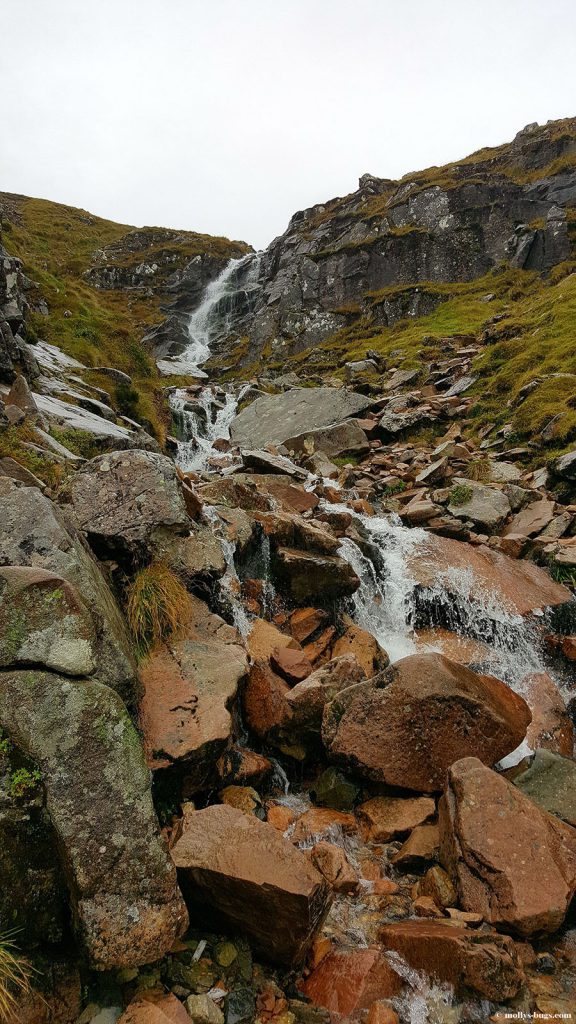






Leave a Reply